Case Kotoku. How Japanese anarchists were accused of assassinating the emperor
It is noteworthy that the decisive influence on them was made not so much by European revolutionaries as the experience of the Narodniks of the neighboring Russian Empire. Moreover, both Russia and Japan at the beginning of the twentieth century had common problems - although both countries developed in scientific, technical and industrial relations, their defenses strengthened and political influence grew in the world, the almost unlimited power of monarchs remained in domestic policy, feudal privileges, prohibition of basic political freedoms.
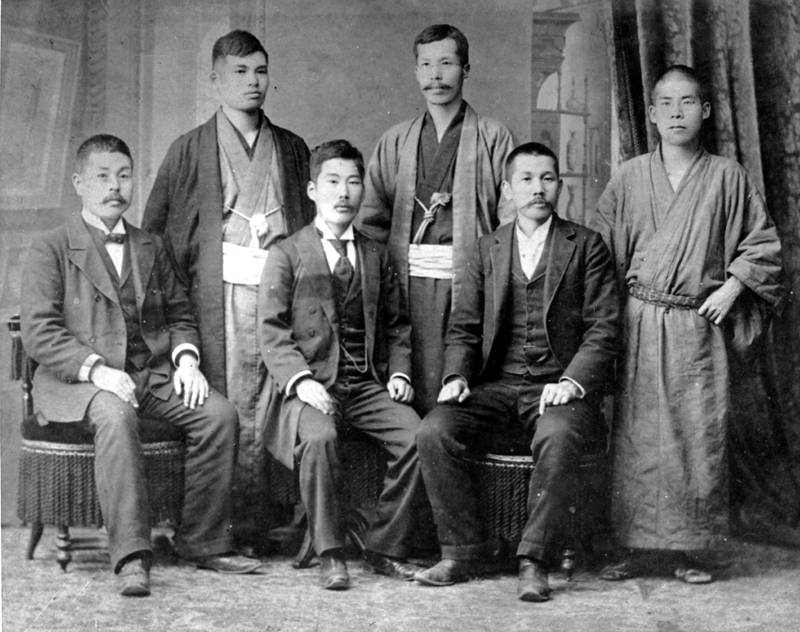
The moderate wing of the Japanese socialists hoped to make changes, first of all, in the nature of labor relations — to achieve a reduction in the length of the working day, an increase in the wages of workers, etc. The moderate socialists hoped to do this by means of a legal political struggle. A more radical part of the socialists focused on anarchism. At the beginning of the twentieth century, anarchist ideas in Japan even surpassed Marxism in popularity. This could be explained not only by the influence of the Russian populists, but also by the fact that the anarchist doctrine, especially the views of Peter Kropotkin, the average Japanese accepted more readily than the Marxist doctrine.
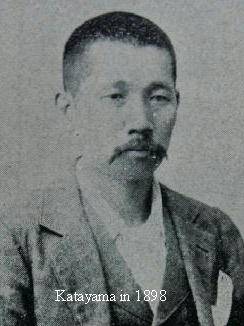
At the root of the radical wing of Japanese socialism were Katayama Sen and Kotok Syushu. Katayama Sen (1859-1933), who was actually called Sugatoro Yabuki, was born into a peasant family in the village of Kumenan, and at the age of seventeen he left for Tokyo, where he found work as a typesetter. During his life and work in Tokyo, Katayama became close friends with Iwasaki Seikichi, the scion of a wealthy Japanese family, nephew of one of the founders of the famous concern Mitsubishi. Iwasaki Seikichi was just about to go to study in the United States, and Katayama Sen also took advantage of this. He also went to "conquer America." The journey, I must say, was successful. In the USA, Katayama studied at the famous Yale University. The Western world had such a strong influence on the young Japanese that he adopted Christianity. Then Katayama was carried away by socialist ideas. In the 1896 year, at almost the age of forty, Katayama returned to Japan. It was here that socialist circles and groups were gaining momentum. Katayama joined the Japanese socialist movement and did many useful things, for example, he became one of the founders of the Metalworkers 'Union - the first Japanese workers' union.
Another important figure in the development of the Japanese revolutionary socialist movement was Denjiro Kotok. The development of Japanese anarchism was connected with the name Kotoku, but more on that later. Denjiro Kotoku, better known under the pseudonym "Syusuy", was born on November 5 1871 in the town of Nakamura in Kochi Prefecture. In the biography of Katayama and Kotok, there is much in common - just like his senior comrade, Kotoku, when he was young, moved from the province to Tokyo. Here the young man got a job as a journalist. Brilliant abilities allowed him, a native of the province, to quickly achieve success in the journalistic field. Already in 1898, five years after the start of journalism, Kotoku became a columnist for Tokyo’s most popular newspaper news". At the same time, he became interested in socialist ideas. Before sympathizing with the liberals, Kotoku considered that socialism is a more just and acceptable way for Japanese society.
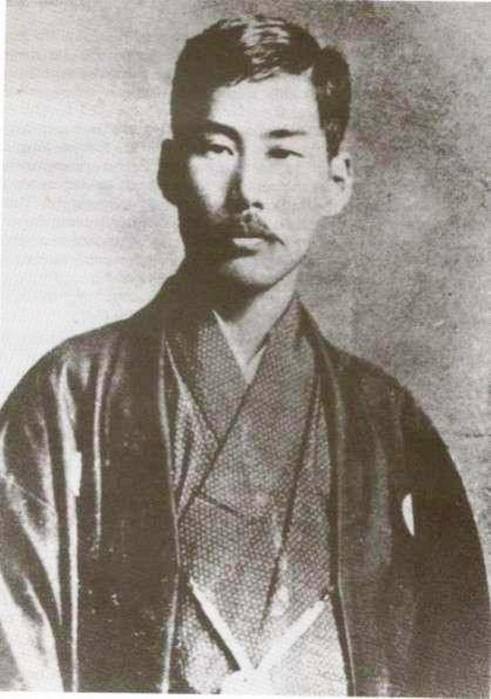
21 April 1901, Katayama Sen, Kotoku Sushui and several other Japanese socialists met to create the Social Democratic Party - Syakai Minsyuto. Despite the name, the party’s program was very different from the European or Russian social democratic organizations of the Marxist kind. Japanese social democrats saw their main goals as: 1) establishing brotherhood and peace of people regardless of race, 2) establishing universal peace and complete destruction of all weapons, 3) final elimination of class society and exploitation, 4) socialization of land and capital, 5 a) socialization of transport and communications, 6; equal distribution of wealth among people, 7; provision of equal political rights to all Japanese people; 8; free and universal education for the people. These were the strategic goals of the party. The more tactical tactical program included 38 items. The Social Democrats demanded that the emperor dissolve the chamber of peers, introduce universal suffrage, reduce armaments and stop building up the army, shorten the working day and make Sunday a day off, prohibit night work for girls, prohibit child labor, make schooling free, ensure rights unions. After reviewing the party’s program, the authorities demanded that three points be removed from it - on the dissolution of the Chamber of Peers, on general elections and on arms reduction. The leaders of the Social Democrats refused, in response to which 20 in May 1901, the government banned the activities of the party and ordered to withdraw the circulation of those newspapers in which the manifesto and other party documents were published.
The anger of the Japanese government was not an accident. In 1901, Japan, which turned into an aggressive imperialist power, was already planning an armed confrontation with the Russian Empire for influence in the Far East. The presence of an anti-war political party was clearly not part of the plans of the Japanese elite of that time. Meanwhile, Kotoku and some other Japanese socialists gradually shifted to more and more radical positions. If Katayama Sen went to the USA for three years, and during emigration he concentrated his efforts on working as a member of the Socialist International, then Kotoku remained in Japan. Despite the tightening of domestic policy and the growth of aggressive rhetoric in Japan’s foreign policy, Kotoku continued to actively oppose the militarization of the country, criticized the authorities for preparing a war with Russia.
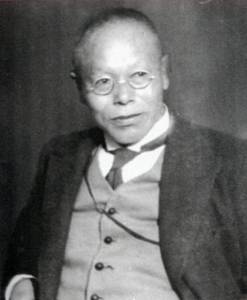 His closest associate was Sakai Tosihiko (1870-1933) - also a journalist who collaborated in the newspaper “Every morning news”. Together with Sakai Tosihiko Kotok, in November 1903 of the year began the release of a frankly anti-war publication - The National Press (Heiming Shimbun). This edition came out before January 1905 of the year - that is, caught the beginning of the Russian-Japanese war. The authors of the publication did not hesitate to openly oppose the war with the Russian Empire, criticized the repressive policies of the authorities. In 1904, Kotoku Syusuy and Sakai Tosihiko translated the Japanese Communist Manifesto by Karl Marx and Friedrich Engels into Japanese.
His closest associate was Sakai Tosihiko (1870-1933) - also a journalist who collaborated in the newspaper “Every morning news”. Together with Sakai Tosihiko Kotok, in November 1903 of the year began the release of a frankly anti-war publication - The National Press (Heiming Shimbun). This edition came out before January 1905 of the year - that is, caught the beginning of the Russian-Japanese war. The authors of the publication did not hesitate to openly oppose the war with the Russian Empire, criticized the repressive policies of the authorities. In 1904, Kotoku Syusuy and Sakai Tosihiko translated the Japanese Communist Manifesto by Karl Marx and Friedrich Engels into Japanese. Finally, in February 1905, Kotok Shushui was arrested for antiwar propaganda and sentenced to 5 months in prison. One hundred and fifty days Kotok spent in prison radically influenced his worldview. Kotoku himself later said that he was imprisoned by a Marxist, and he was released by an anarchist. The further radicalization of his views was influenced by the book of Peter Kropotkin “Fields, factories and workshops”, which he read during his imprisonment. Freed in July 1905, Kotok decided to temporarily leave Japan. He went to the USA, where by this time his longtime comrade for the creation of the Japanese Socialist Party, Katayama Sen, was also located. In the US, Kotoku began a more thorough study of anarchist theory and practice. He became acquainted with the activities of the syndicalist groups, which later became members of the famous union Industrial Workers of the World (IRM). In addition, while in the USA, Kotoku had more opportunities to get acquainted with the activities of Russian revolutionaries. Kotoku, like some other Japanese socialist political émigrés, was particularly sympathetic to the Russian Party of Socialist Revolutionaries. In the end, 1 June 1906, 50 of Japanese immigrants gathered in Oakland, California, and founded the Social Revolutionary Party. This organization published the journal Revolution, as well as numerous leaflets in which the Japanese Social Revolutionaries called for an armed struggle against the imperial regime.
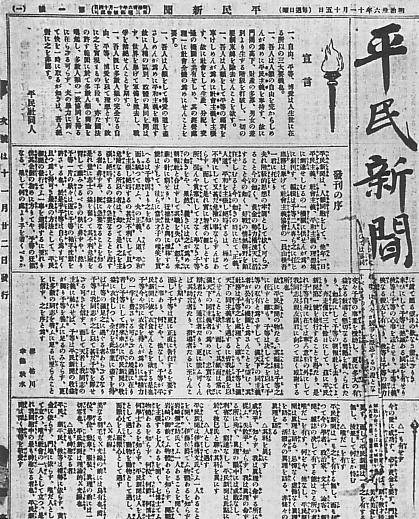
In 1906, Kotoku Shushui returned from the United States to Japan. By this time, interesting events were taking place in the socialist movement of the country. Katayama Sen criticized the anarchists, but many social democrats, including capable publicists, chose to take the side of Kotok and took anarchist positions. In January 1907, the socialists were able to resume the publication of the Public Gazette, but in July of the same year it was again closed. Instead, they began to print two other newspapers - the Social Democratic newspaper Social News and the anarchist Gazette of ordinary people Osaka. So finally there was a split between the Japanese Marxists and the anarchists. The two founding fathers of the radical socialist movement in Japan, Katayama Sen and Kotoku Sushuy, led respectively Marxist and anarchist movements.
By this time Kotoku Syusyu finally took anarchic-communist positions, becoming a follower of the ideas of Peter Kropotkin. At the same time, if we take the anarchist movement in Japan as a whole, then its ideology was very vague and eclectic. It included the components of anarchist communism in the Kropotkin trend, syndicalism modeled on the American “Industrial Workers of the World” and even Russian revolutionary radicalism in the spirit of the Social Revolutionaries. Kropotkin's ideas bribed many Japanese precisely with an appeal to the peasant community — at the beginning of the twentieth century, Japan was still predominantly an agrarian country, and the peasants constituted the majority of the population in it.
On the other hand, the Japanese proletariat was gaining momentum, and among it, anarcho-syndicalist ideas aimed at the creation of revolutionary trade unions and the economic struggle turned out to be in demand. At the same time, many young Japanese revolutionaries were impressed by the example of the Russian Social Revolutionaries, who took the path of individual terror. It seemed to them that radical acts against the emperor or someone from the highest echelon of power could affect the public consciousness and lead to some large-scale changes in the life of the country. At the same time, Kotoku Syusuy himself was an opponent of individual terror.
An important role in the popularization of anarchist and socialist ideas in Japan was played by the wife of Kotoku Kanno Suga (1881-1911) - one of the founders of the Japanese women's movement. At that time, the position of a woman in Japan was still very humble, therefore the participation of women in the political movement was perceived ambiguously. Especially surprising is the life of Kanno Suga - a girl born in a simple family of a mountain master in a small village near Kyoto. Kanno Suga considered her ideal Russian revolutionary Sophia Perovskaya, whom she tried to imitate in every possible way. She wrote articles for the National Gazette, and then published her own magazine, Free Thought (Dziyu Siso).
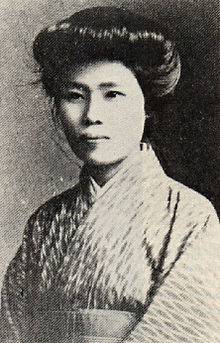
In the spring of 1910, the Japanese intelligence agencies intensified repression against the revolutionary movement. In June 1910, hundreds of Japanese anarchists and socialists were arrested. Twenty-six people were accused of preparing for the assassination attempt on the emperor. Among them were Kotoku Shushui and his common-law wife Kanno Suga. The trial of the “insult to the throne case” was decided to be closed. The trial took place in December 1910. All twenty-six defendants were found guilty of preparing an attempt on the emperor, twenty-four defendants were sentenced to death. However, the death sentence was later changed to life imprisonment for twelve anarchists, but it was decided to execute twelve people. Kotoku Shusui was sentenced to execution. The death sentence against the Japanese revolutionaries caused numerous protests not only in Japan, but throughout the world. Actions of solidarity with the arrested anarchists took place in European countries, in the United States. However, Japanese justice remained adamant. January 24 1911 of anarchists sentenced to death were hanged.
The tragic end of Denjiro Kotok (Shusui) and his like-minded people was a completely logical result of their active and open struggle against the harsh militarized regime of Japan. Trying to act with maximum openness, Kotok and his comrades could not calculate the possible consequences, including the brutal repression by the authorities. In this regard, the Social Democrats, who, although subjected to repression, were able to avoid the death penalty, were in a better position.
"The case of insulting the throne", namely under this name entered into history The trial of twenty-six Japanese anarchists dealt a serious blow to the development of the revolutionary movement in the country. First, in addition to the twenty-six defendants, hundreds of other revolutionaries were arrested in Japan, although on other charges, and revolutionary organizations and printing presses were defeated. Secondly, the most active revolutionaries were executed, including Kotoku Syusuya and Kanno Suga. The anarchists and socialists who remained at large were either forced to lie low, or leave the country altogether. From the consequences of the “insult to the throne case”, the Japanese revolutionary movement recovered in about a decade. Nevertheless, in the 1920-s, Japanese anarchists managed not only to revive the movement, but also to significantly surpass their ideological predecessors, having achieved enormous influence on the Japanese working class.
Information